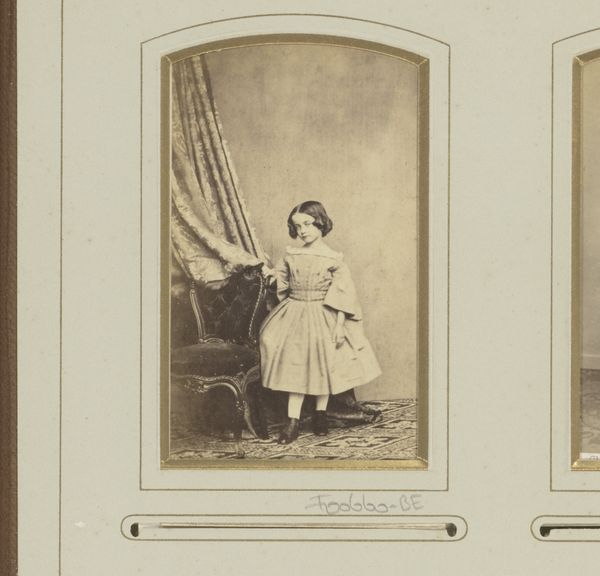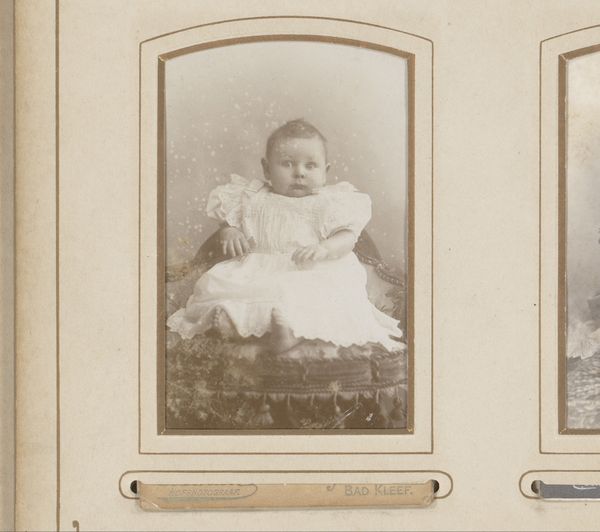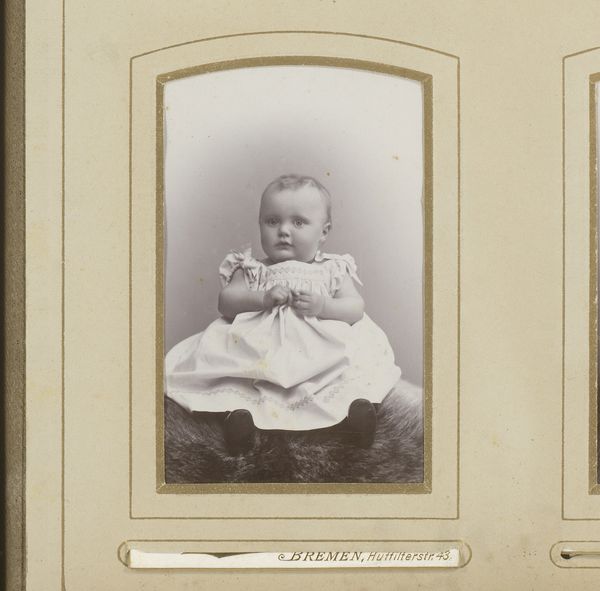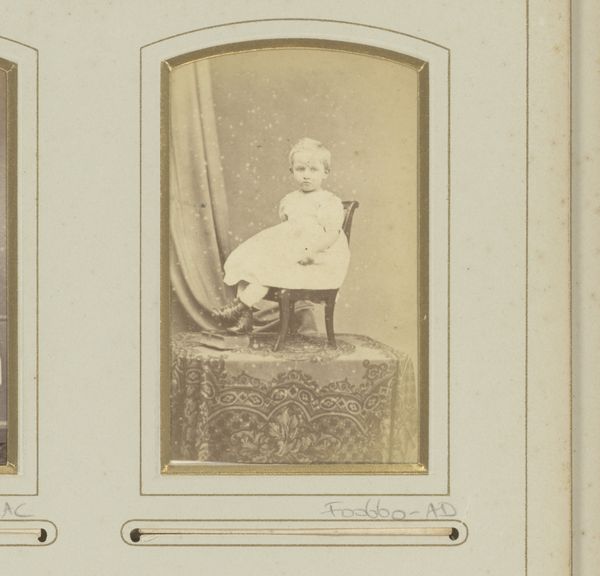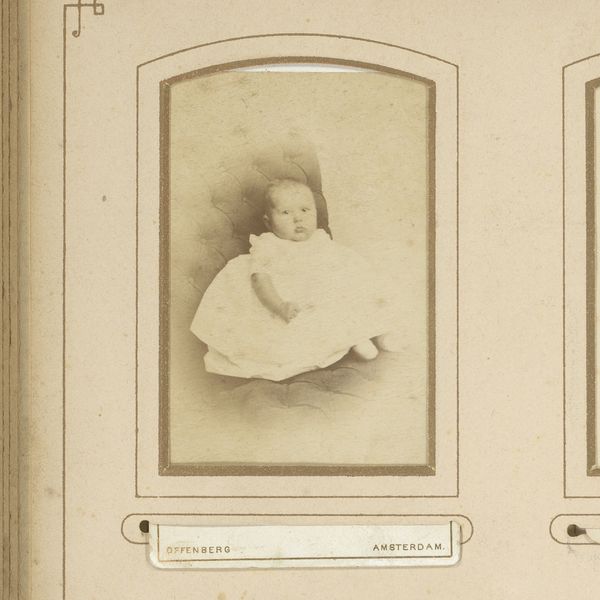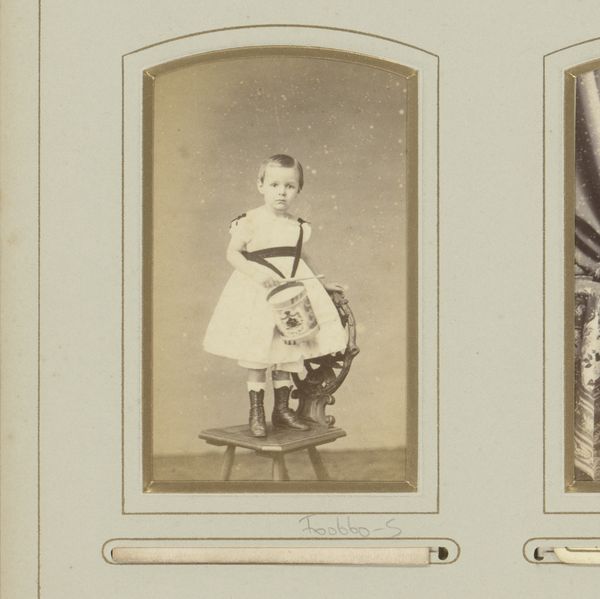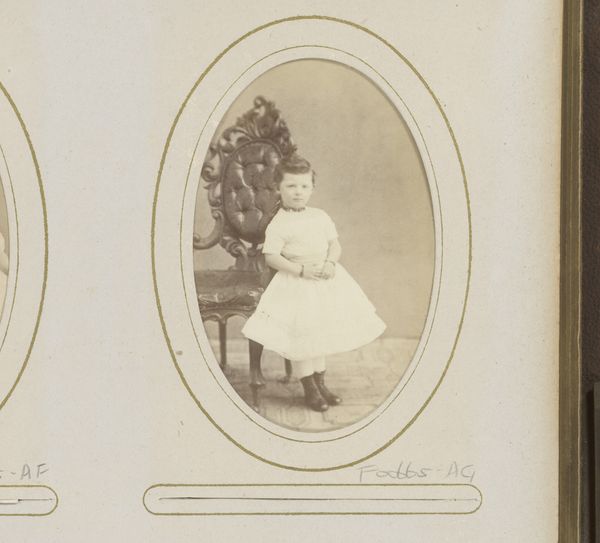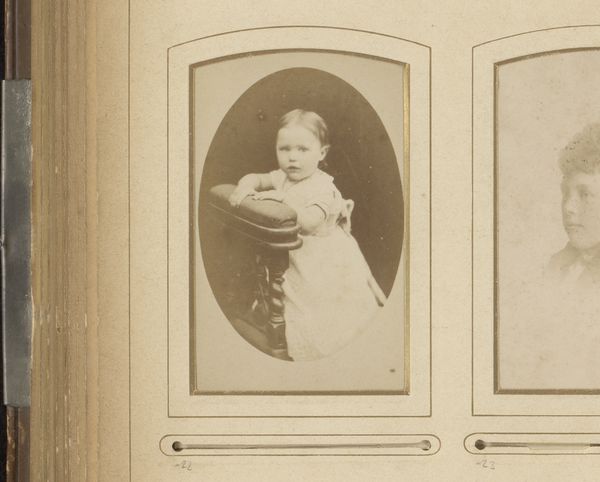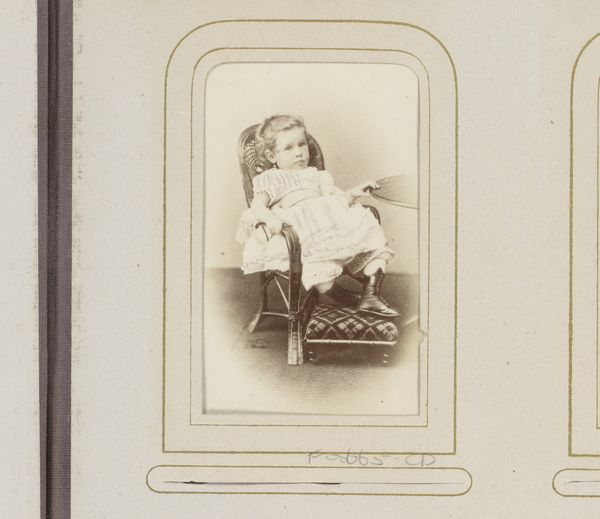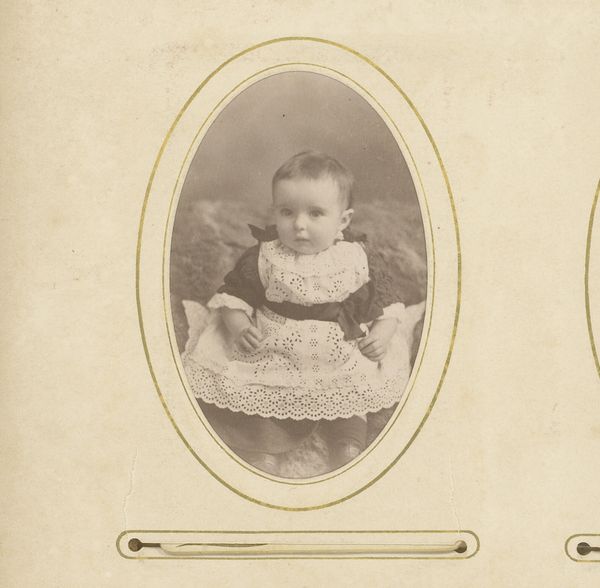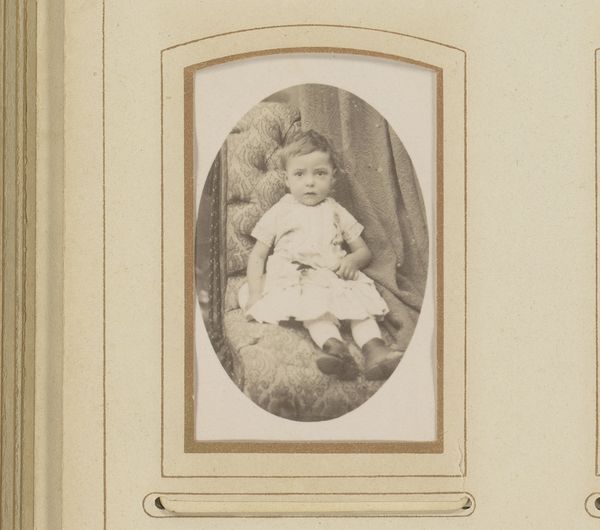
photography
#
portrait
#
figuration
#
photography
Dimensions: height 84 mm, width 51 mm
Copyright: Rijks Museum: Open Domain
Editor: Here we have an albumen print, *Portret van een jong meisje, staand bij een stoel* (Portrait of a young girl, standing by a chair), created sometime between 1850 and 1900. The little girl seems quite melancholic to me. What’s your read on it? Curator: It’s important to consider the rise of photography in the mid-19th century, and its role in shaping perceptions of childhood. Photographic portraits became increasingly accessible to the middle classes, but the process could be long and arduous for the subject, especially for children. Does knowing this influence your perception of the girl's expression? Editor: I suppose so. Thinking about that process does add another layer. The formality of portraiture, the rigid expectation for her to sit still… Maybe her expression is less about sadness and more about discomfort? Curator: Precisely. These photographs weren't simply neutral records; they actively constructed ideas about family, status, and childhood itself. Notice how the studio setting, with the curtain and the ornate chair, attempts to project a certain refinement. Whose interests are really being served by creating and preserving such a portrait? Editor: So, you're saying we should think about this less as a genuine snapshot of a child and more as a performance, a way for a family to present a certain image to the world? It kind of loses some of its sentimental appeal. Curator: Exactly! Recognizing photography's staged nature is crucial. Think about the economic and social power dynamics that influenced this image, and how it differs from contemporary snapshots of children. What is visible and, perhaps more importantly, what is not? Editor: That's fascinating. I'll definitely look at portraits from this period differently from now on. Curator: I hope you do! By examining the social context surrounding art, even something as seemingly simple as a child's portrait becomes a valuable window into history.
Comments
No comments
Be the first to comment and join the conversation on the ultimate creative platform.
